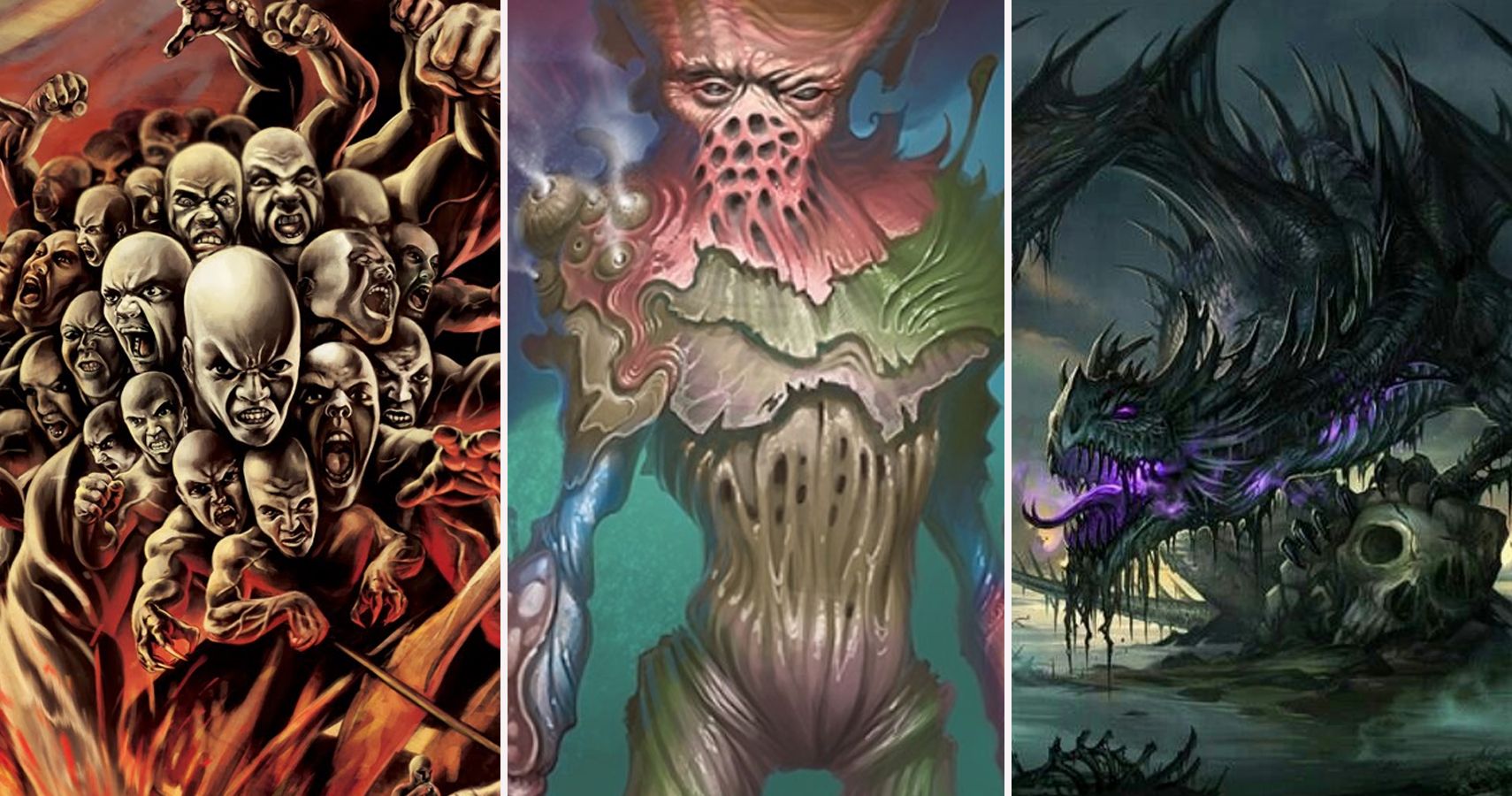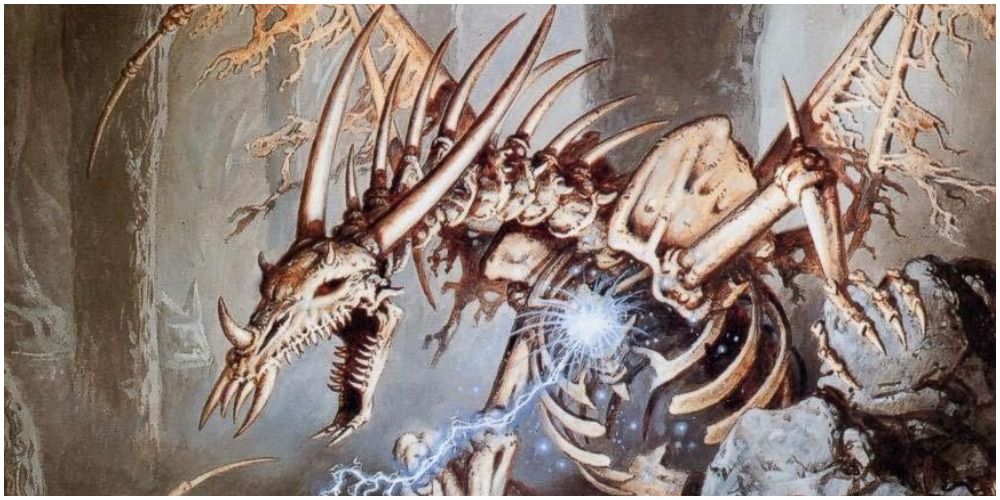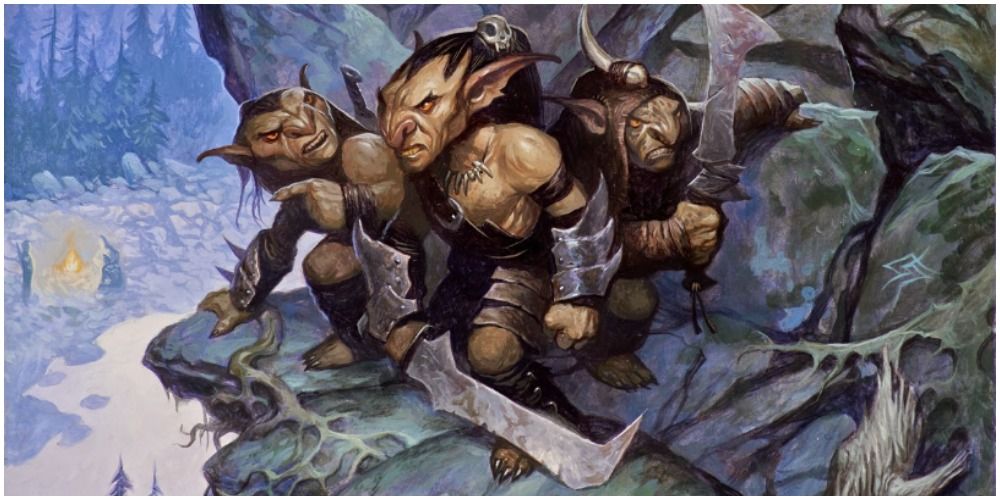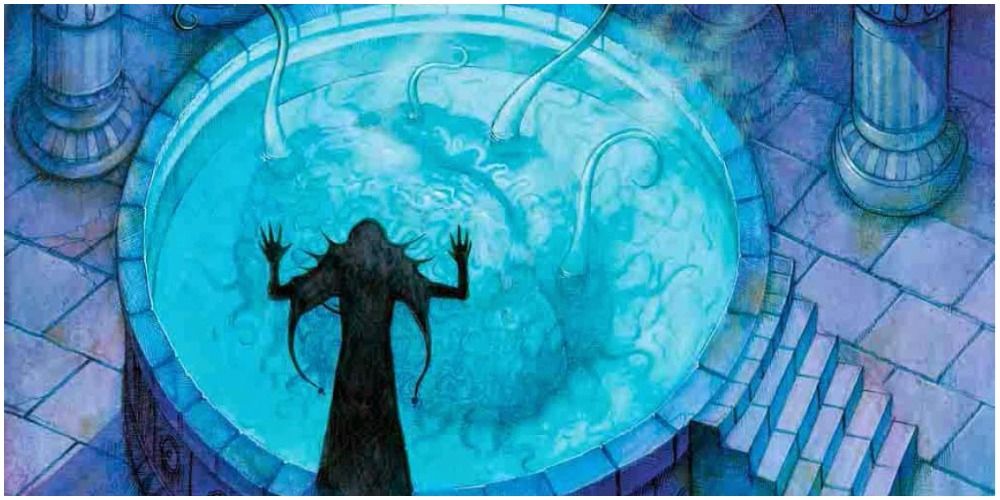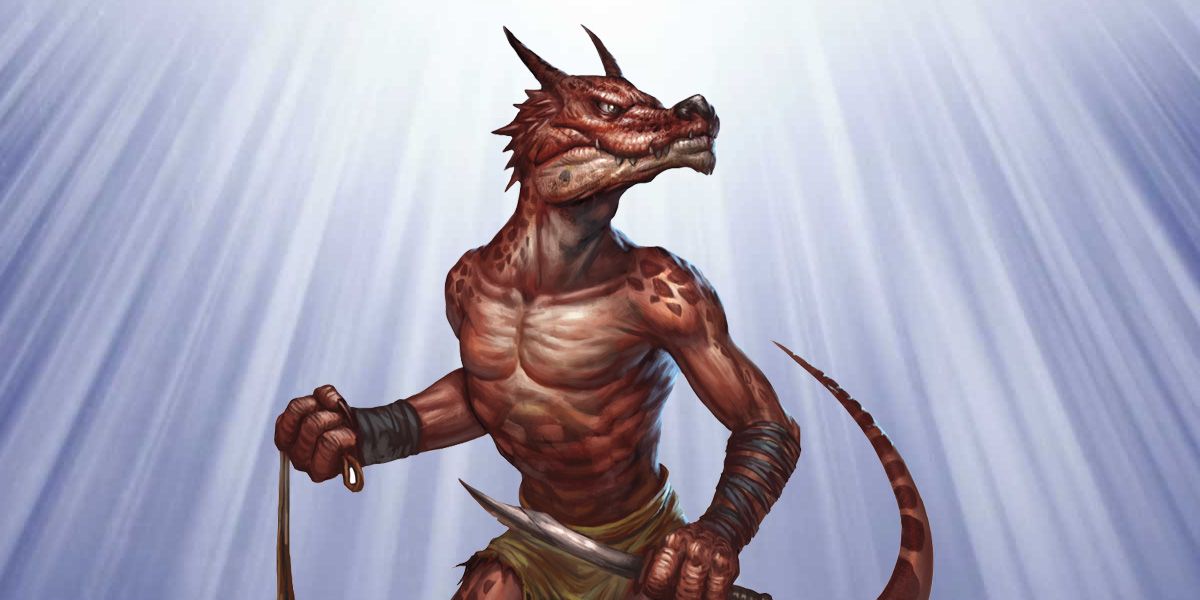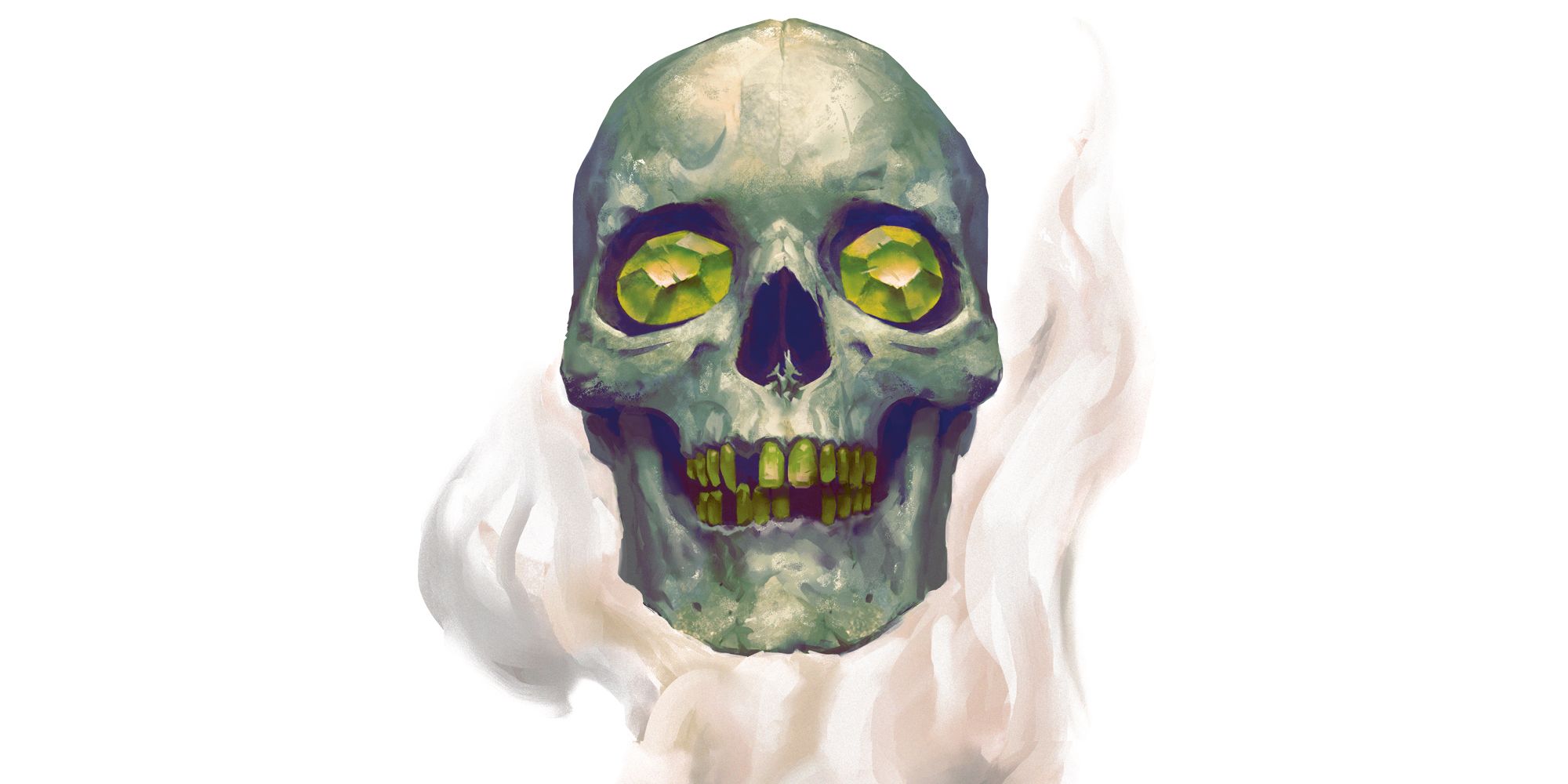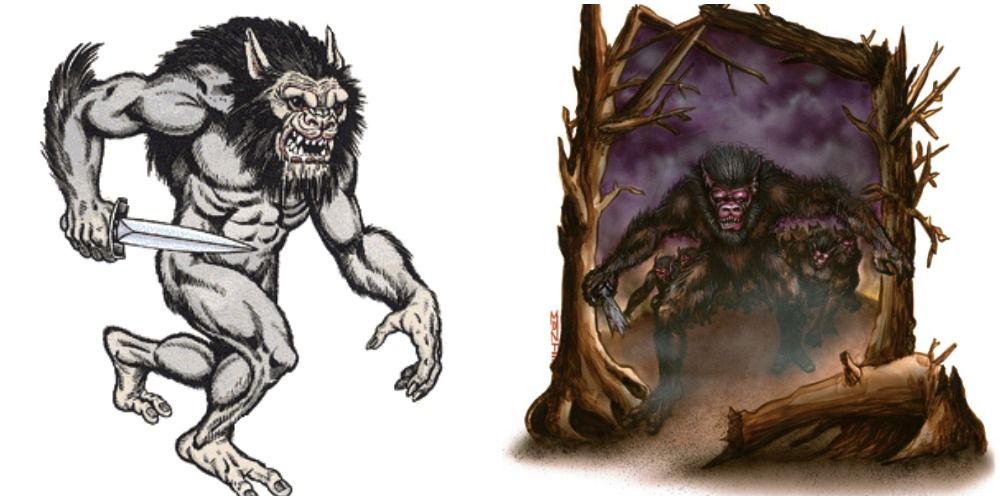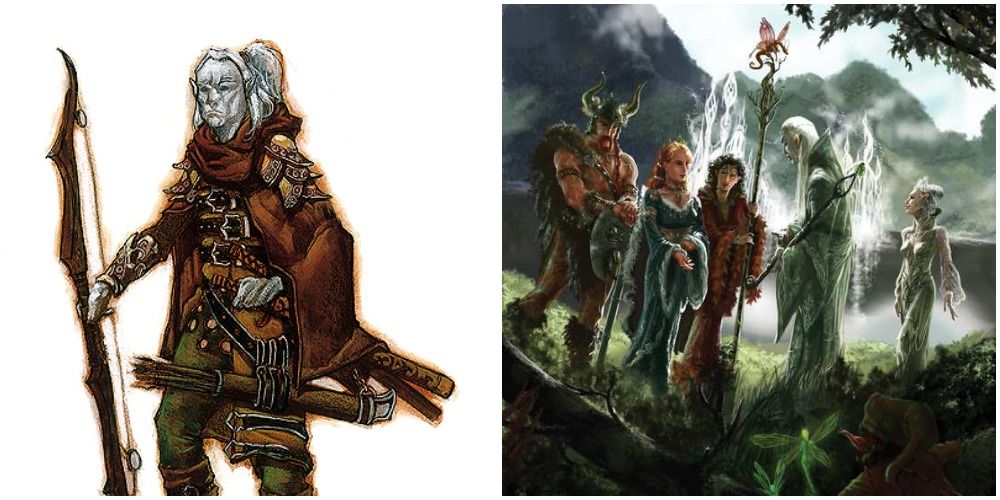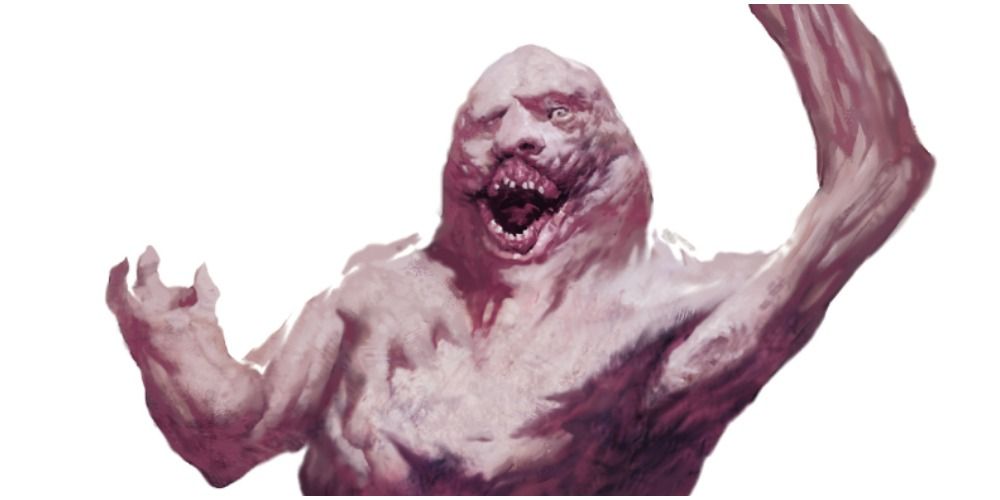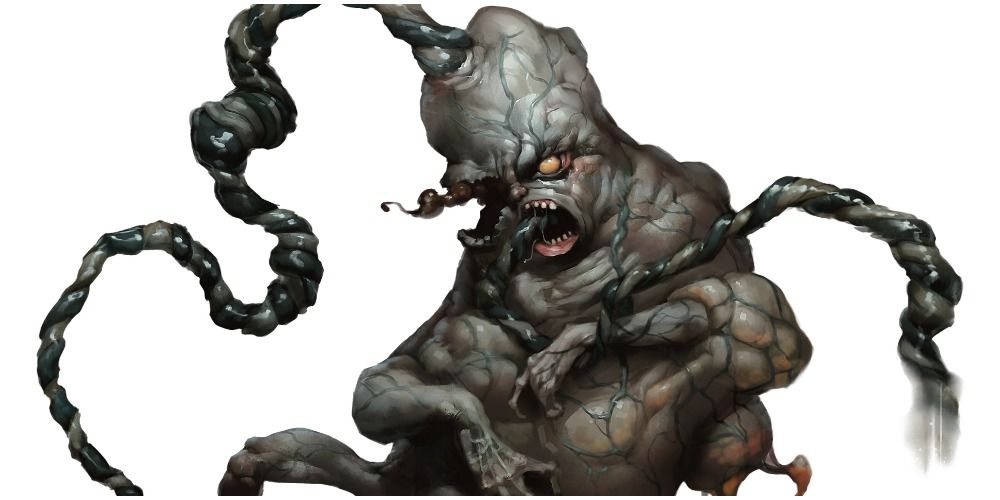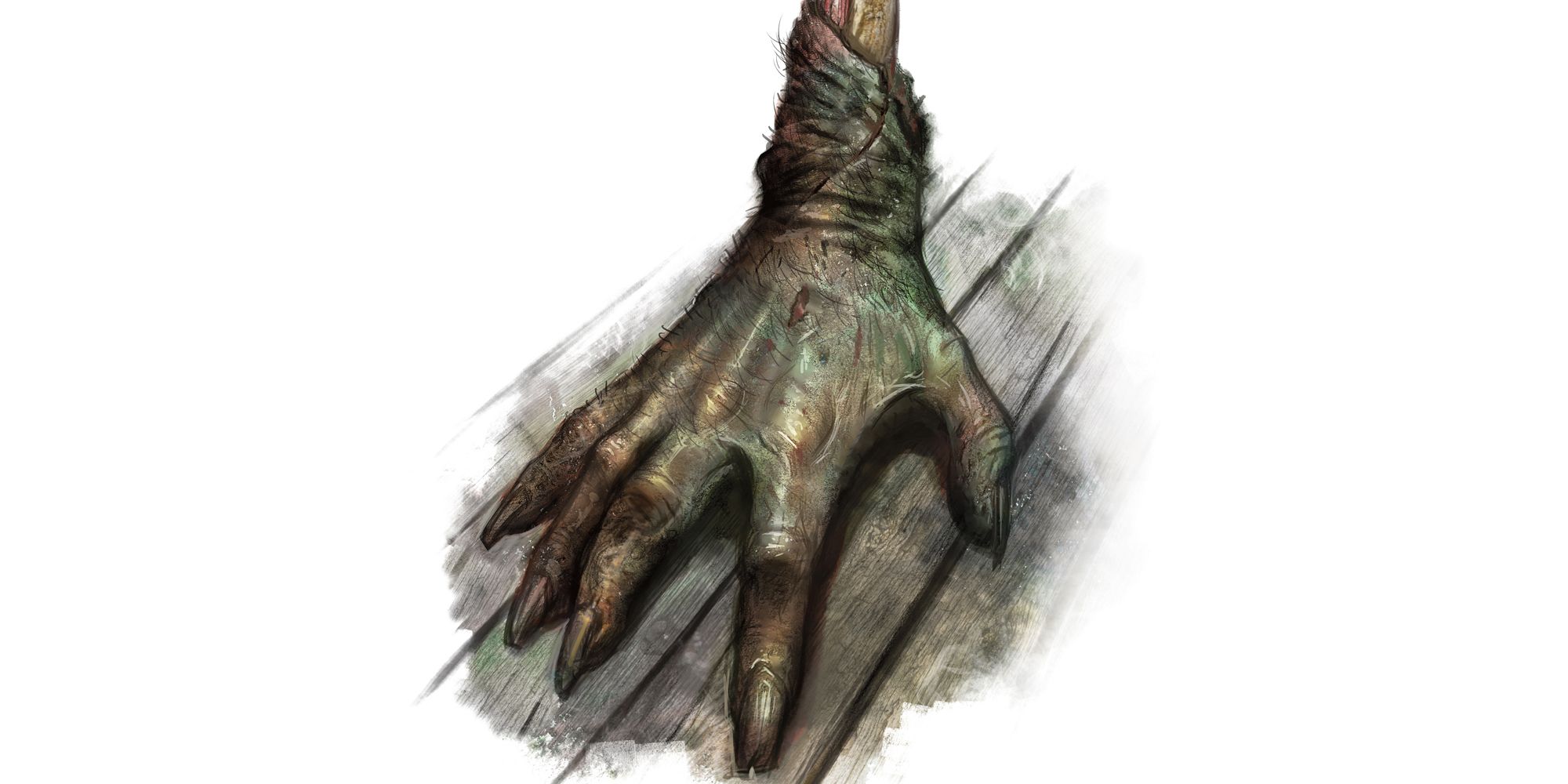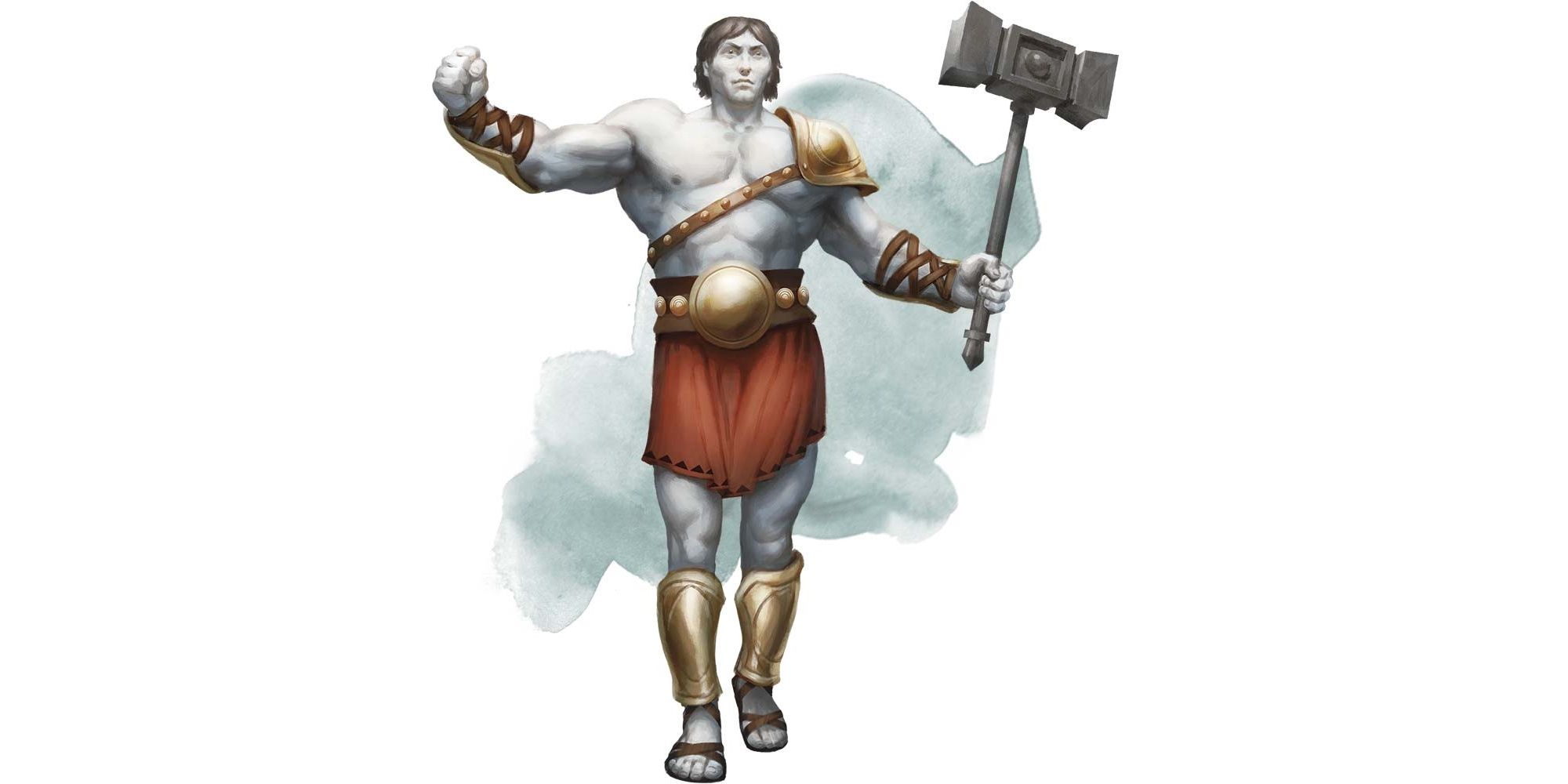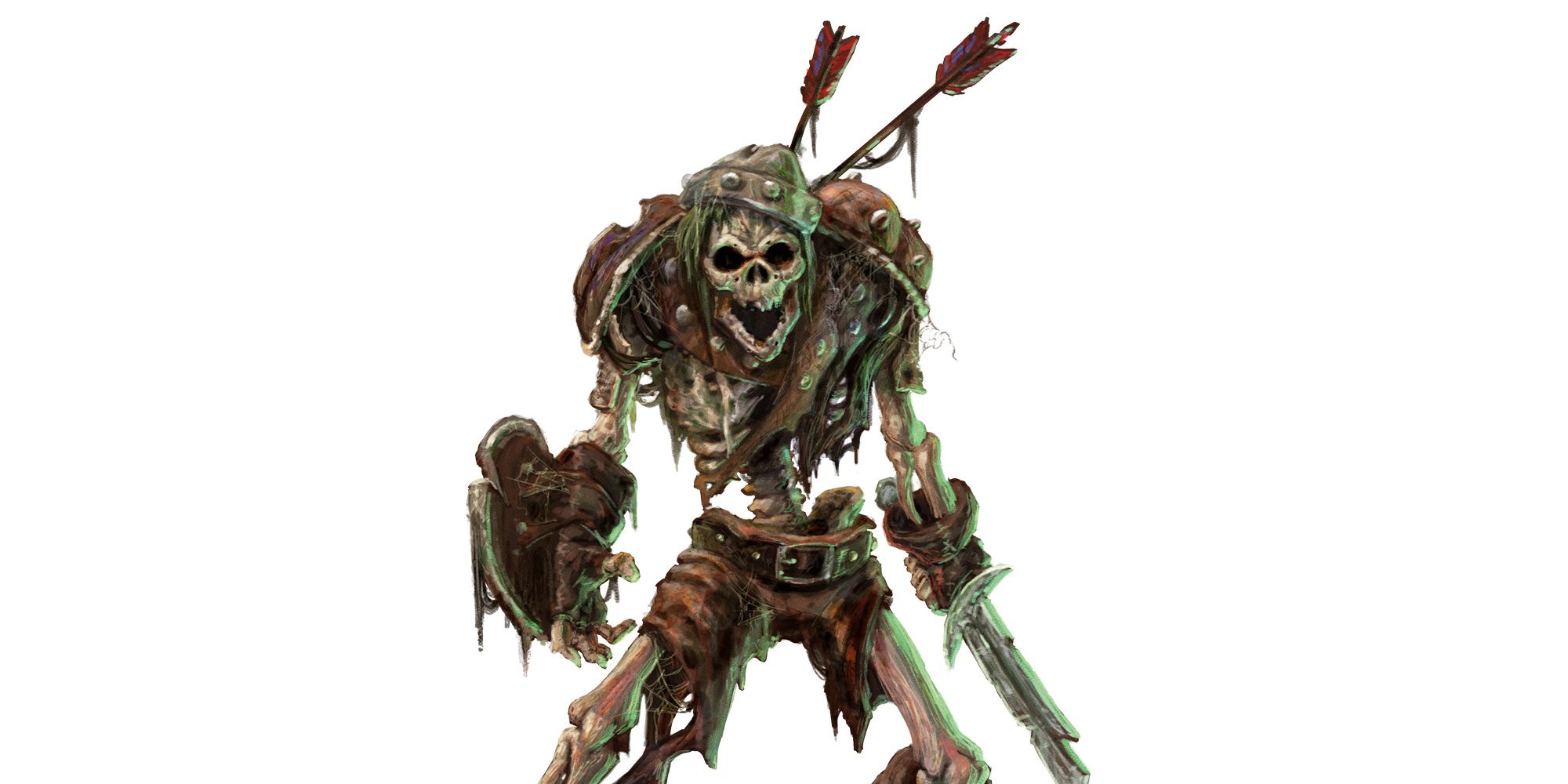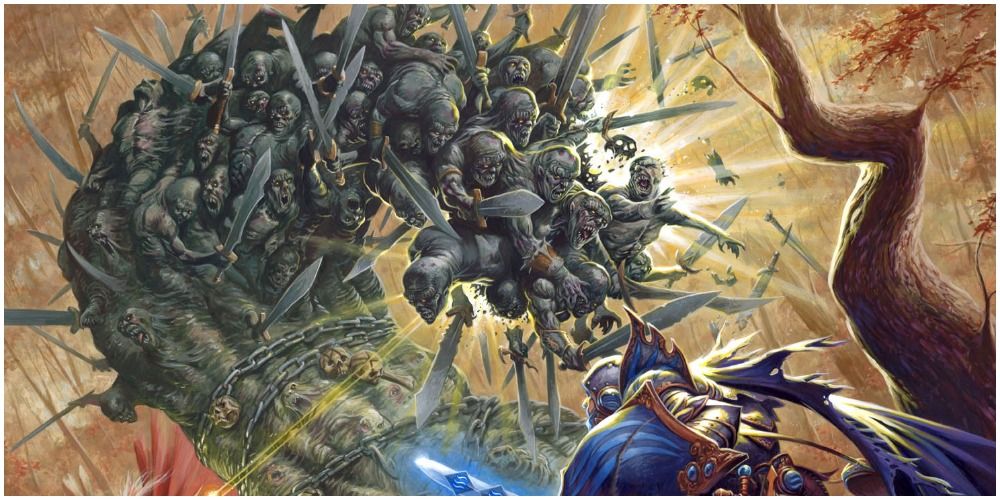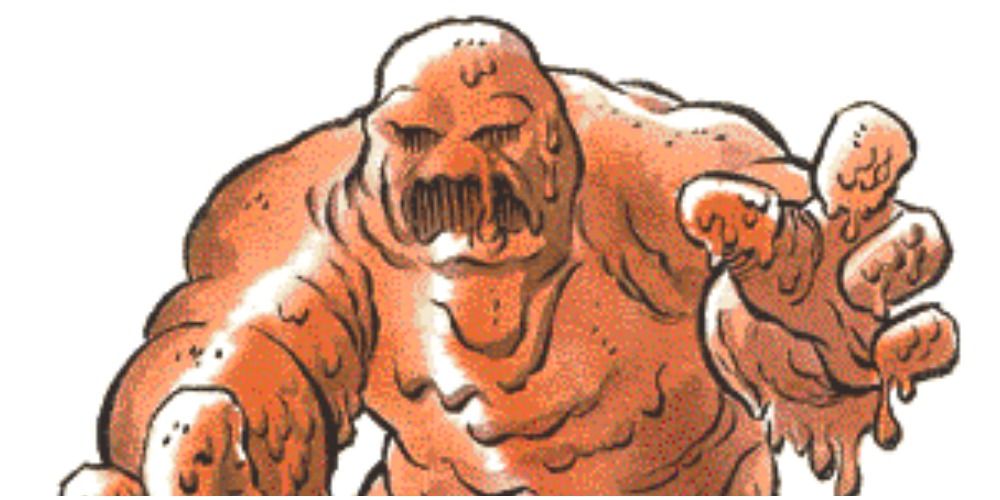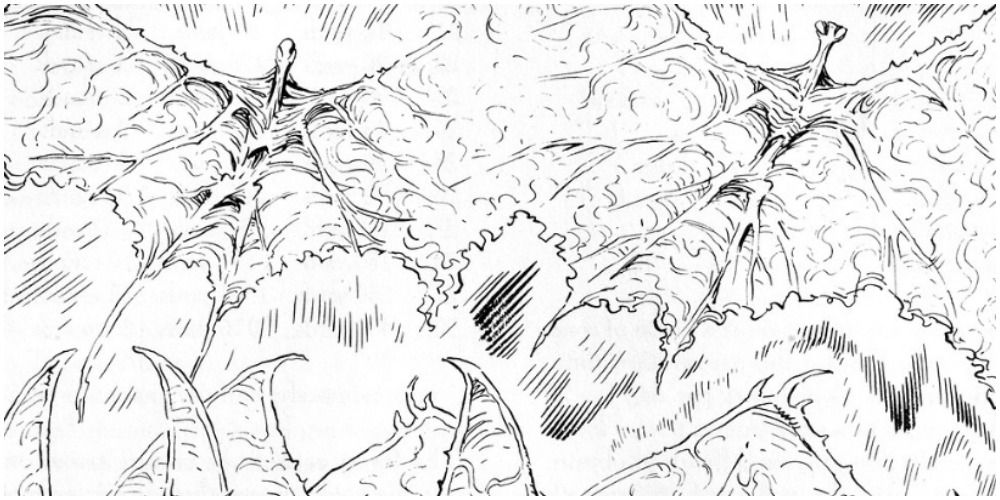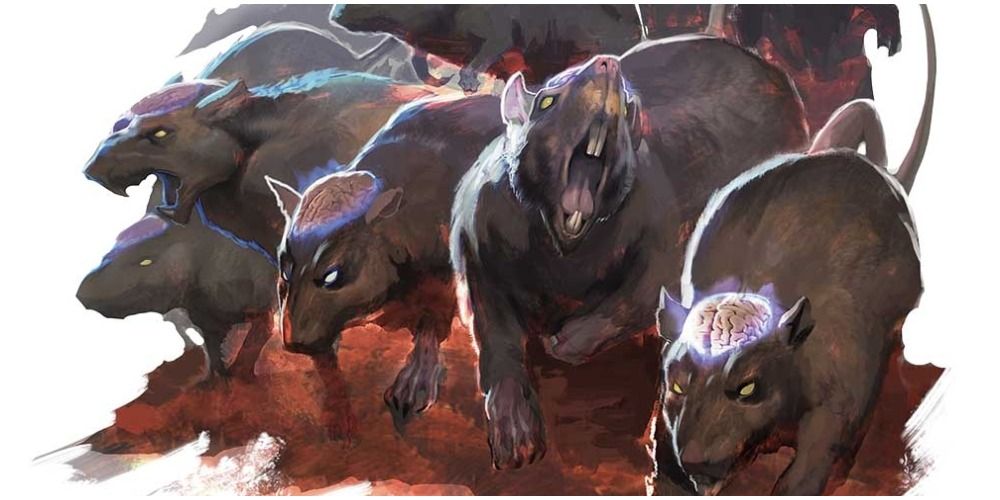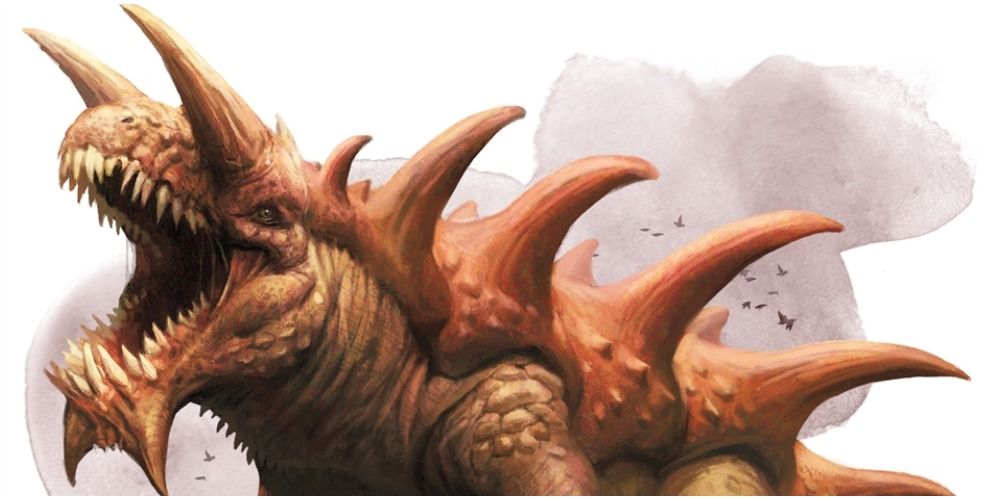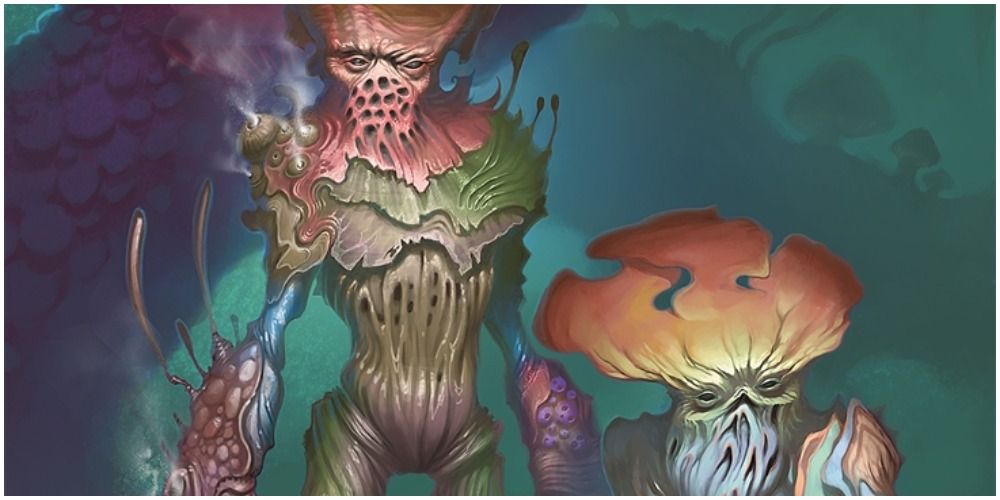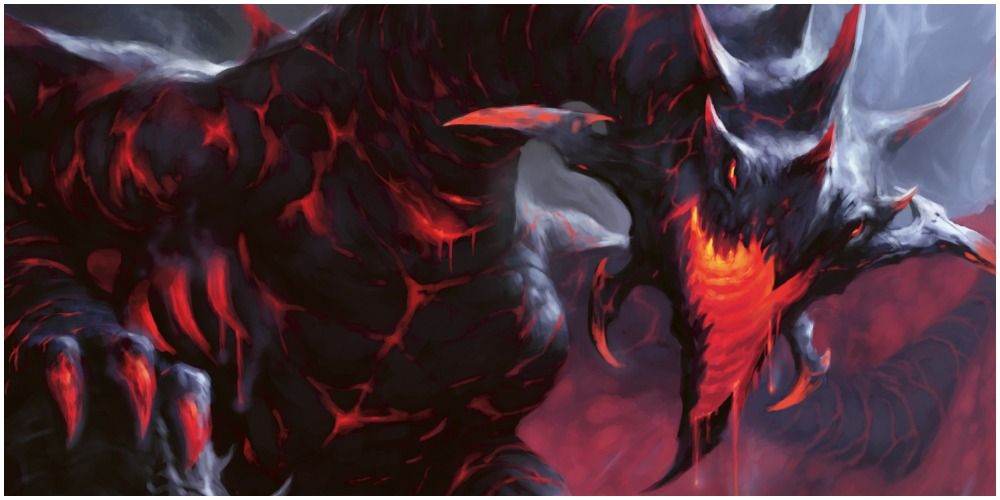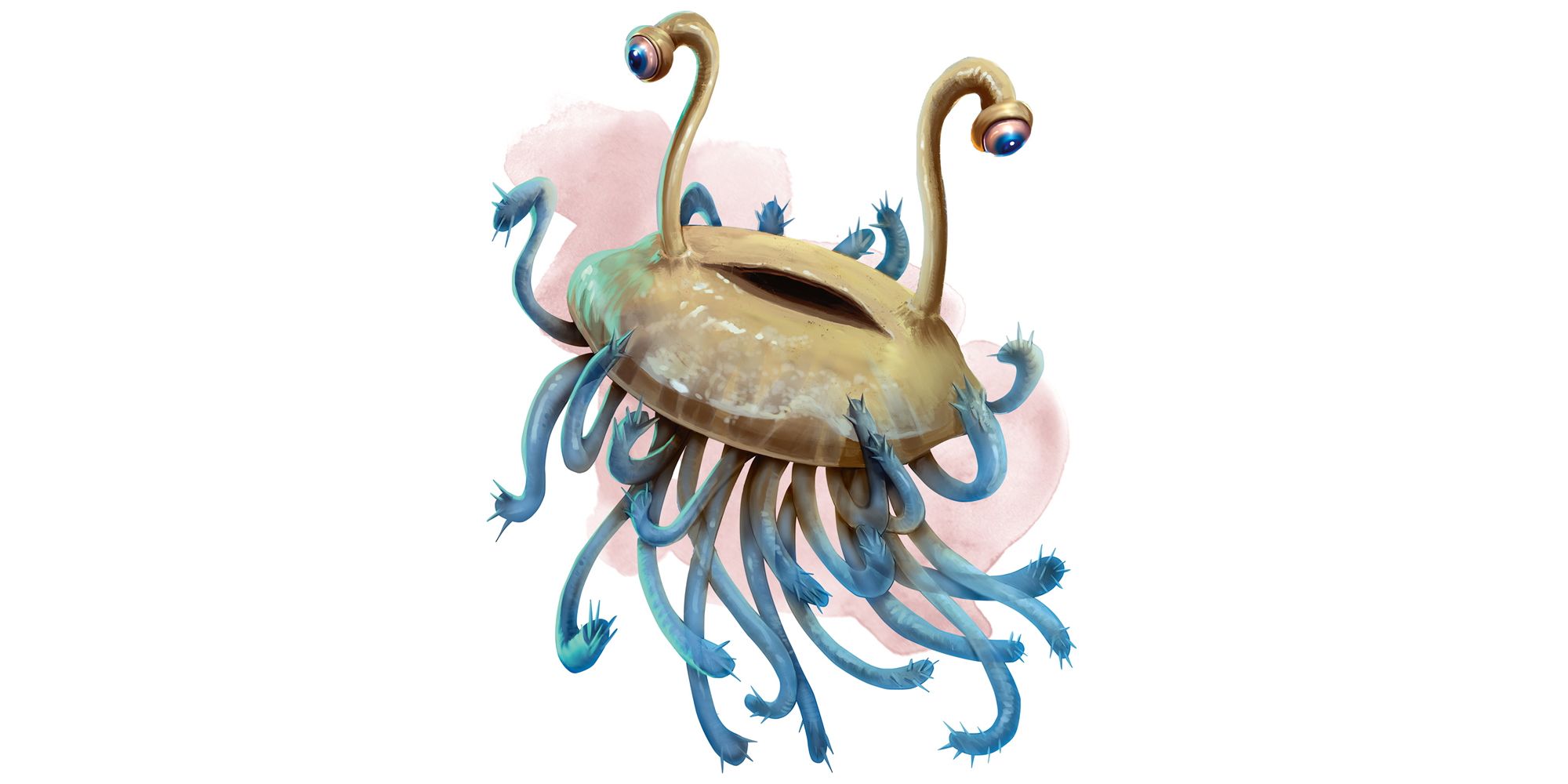The various official campaign settings that are used in Dungeons & Dragons are all teeming with monsters of every description. The goal of each adventure will bring you into opposition with these creatures, which will almost certainly result in a battle, as only the most role-playing focused of campaigns will eschew all forms of combat.
As new editions of Dungeons & Dragons were released, the creators of the game worked out a formula for determining the level at which certain monsters should be unleashed upon the party. This is referred to as a challenge rating and it was introduced in the third edition of the game as a means of helping the dungeon master to create balanced combat encounters. In the old days of Dungeons & Dragons, it was the wild west in terms of what kinds of monsters the player could face, as the books weren't helpful in offering guidance as to when certain creatures should be used.
The various editions of Dungeons & Dragons have created thousands of different monsters for a dungeon master to use in their campaign, some of which can annihilate the party in a single round, while others will act as little more than cannon fodder. When determining the strongest and weakest monsters in the history of Dungeons & Dragons, we decided to disqualify any beings with divine powers, such as Gods, as well as unique characters, such as Acererak or Strahd. These beings exist on a whole different level and aren't likely to be encountered except in very specific circumstances.
We are here today to rank the best and the worst among the monsters that you can battle in Dungeons & Dragons. From the undead dragon that is a nightmare to destroy, to the squid that is afraid of falling over.
Here are the Ten Most Powerful (And Ten Weakest) Monsters In Dungeons & Dragons, Ranked!
Strong: Dracolich
Dragons tend to provide the most challenging combat encounters in Dungeons & Dragons, which is fitting, considering that they are in the name of the game. The reason why dragons are so powerful is due to their high stats, absurdly high number of hit points, deadly breath weapon, and their ability to cast spells in the same manner as a powerful sorcerer.
It's possible to make a dragon even more fearsome and powerful, all you need to do is turn it into an undead monstrosity.
Dracoliches are dragons that have undergone the same magical ritual that regular humanoids undertake when they want to become a lich. They remove their soul from their body and place it within a secure item, known as a phylactery, which will prevent them from being destroyed through conventional means.
A dracolich is essentially a more powerful version of the dragon that it was before. It gains the immunities that come with being an undead creature, as well as having all of its original attacks and stats boosted. A dracolich also gains the ability to cast control undead, which means that it will likely surround itself with powerful minions that will fight alongside it in battle.
Like regular liches: a dracolich cannot be truly destroyed unless its phylactery is taken to another dimension. This means that you will have a much harder time dealing with one of these creatures than you would have with a regular dragon.
Weak: Goblin
The first combat encounter in most Dungeons & Dragons campaigns will usually involve some goblins. You have The Hobbit to thank for this, as Bilbo's encounter with the creatures that live beneath the Misty Mountains is what helped to inspire the creation of Dungeons & Dragons in the first place.
Goblins represent the perfect early challenge for a brand new adventuring party; they are physically weak and rely on group tactics in order to surround their enemy and take them down with numbers. The party will have to quickly use some teamwork of their own in order to combine their unique abilities and overcome the superior numbers of their foes.
Goblins are purposely designed to be weak and ineffective in combat so that they can fulfill their role as the tutorial battle of Dungeons & Dragons.
The later editions of Dungeons & Dragons made it possible for goblins to take levels in character classes, which meant that they could present a greater threat with the right setup of abilities. They would still suffer compared to the playable races from the Player's Handbook as they have naturally poor stats, which means that even a goblin prodigy would find it hard to match up to an adventuring party.
Strong: Elder Brain
Mind flayers are considered to be one of the most disliked creatures in all of Dungeons & Dragons. This is due to the fact that their abilities are linked to psionics and enchantment magic. A single mind flayer can quickly paralyze an entire adventuring party with a single psionic ability or spell, which will allow it to feast upon their brains at their leisure.
The mind flayers all answer to a giant brain in a jar, which is referred to as an elder brain. The elder brain acts as the ruler of a mind flayer community and offers them protection from threats from the outside world, such as opposing evil societies that live in the Underdark. This protection isn't necessary, as few would willingly provoke the wrath of a city full of mind flayers.
In Advanced Dungeons & Dragons, an elder brain possesses the power of a 20th level psionicist, which gives it access to a range of powers that exceeds that of a mage of the same level. It's almost impossible to even approach an elder brain, as their powers allow them to perform incredible feats that will stop even those that are usually immune to psionics, such as constructs or undead.
The current edition of Dungeons & Dragons has toned down the elder brain a lot, as it now has a challenge rating of eighteen. It still represents a grave threat to most adventuring parties, thanks to its range of powerful enchantment spells and psionic attacks, but it isn't quite the epic level threat that it once was.
Weak: Kobold
When a dungeon master has run several low-level Dungeons & Dragons adventures, they will inevitably grow weary of using the same creatures from before and will want to shake things up. That's the moment when they prepare to paint over the serial numbers and replace the goblins with kobolds.
Kobolds have existed since the creation of Dungeons & Dragons, where they introduced as being an even weaker alternative to goblins.
They were intended to be little more than red goblins with a more lizard-like design, which meant nothing in terms of their stats, as most low-level groups of adventurers would still annihilate a horde of kobolds in battle.
The third edition of Dungeons & Dragons was kinder to the kobolds, as they were given sorcerer as their favored class. This was due to the idea that they have some draconic blood in them, which means that they have a natural affinity for magic. The idea of kobold sorcerers becoming the leader of their community through the use of force became a popular one, which is why they started to appear in more adventures.
It bears mentioning that it's possible to create one of the most powerful character builds in the whole of the third edition of Dungeons & Dragons by using a kobold main character, but only the craziest of dungeon masters would ever allow some of the rule interpretations that are necessary to make such a character.
Strong: Demilich
A powerful spellcaster in a Dungeons & Dragons world can attempt to achieve immortality by performing the ritual that will transform them into a lich. This requires the spellcaster to transfer their soul into a phylactery, which will turn them into an undead monster and make them much more difficult to permanently destroy.
When a lich has existed for long enough, they will lose the need to maintain a full skeletal body and will transfer all of their power into their skull. This transforms them into a demilich, which is one of the most powerful spellcasters you are ever likely to encounter in a game of Dungeons & Dragons.
You might think that a floating skull would be easy to smash to pieces, but you would be wrong, as demiliches are some of the most resilient creatures in the game. The third edition version of the demilich is immune to all but three spells (dispel evil, holy smite, and shatter) and will absorb the first thirty points of damage from any other source, regardless of the kind of weapon used. The demilich also possesses the standard undead immunities, which means that it resists or is immune to most common forms of damage.
The standard demilich casts spells as if it were a 21st level wizard and can attempt to steal the souls of those that it looks at. When facing a demlich in battle, you are a single saving throw away from destruction.
Weak: Gibberling
Goblins and Kobolds might be cowardly and weak, but it's possible for other evil beings to whip them into shape and turn them into a formidable fighting force. Creatures like bugbears, hobgoblins, and orcs will often train their smaller cousins and use them as front-line fighters.
Gibberlings lack the comprehension that allows creatures like goblins and kobolds to be trained, as they are little more than mindless beasts.
Gibberlings seem like a scary idea on paper, as they are hairy screaming monsters that attack in large groups and seek to devour everything in their path. The problem is that they are incredibly easy to defeat in battle, which is partly due to their short size and weak stats. The average Dungeons & Dragons village won't bother hiring adventurers to deal with a gibberling invasion, as even the commoners with their farming tools can easily dispose of this lackluster invading horde.
Gibberlings will be familiar to fans of the Baldur's Gate series, as they are some of the earliest foes in the game. They will give you the easiest battles, which is in stark contrast to the rest of the brutally difficult fights you need to survive at the start of the series.
Strong: LeShay
The third edition of Dungeons & Dragons had a well-known issue where a common housecat could slay a human commoner in combat, thanks to the way that the minimum damage rules worked. The average human could be taken down by a cat. The average leShay could take down an army.
The leShay are a race of fey humanoids who hail from the universe that existed before the current Dungeons & Dragons multiverse.
The few remaining leShay are the survivors of some great conflict that ended up wiping their entire civilization from reality. The leShay that managed to make their way into the current universe seem to have no intention of recreating their previous society and are content to watch over the fates of the dominant humanoid races. They are all immortal and seem to be in no rush to try and reclaim any of their lost glory, at least not at this point in time.
The average leShay has over eight-hundred hit points and an armor class score of fifty-two. The average weapons wielded by a leShay (as listed in the Epic Level Handbook) are two +10 keen brilliant energy bastard swords, which they wield with the skill of a master, thanks to several different feats. They also possess access to several high-level spells, which they cast as if they were epic level sorcerers.
Weak: Lemure
Demons and devils are some of the most feared creatures in the Dungeons & Dragons multiverse. They count creatures like the Balor among the ranks, which are based on the Balrog from The Lord of the Rings (which is what they were originally called before a lawsuit from the Tolkien estate forced a name change) and it is just as deadly. Fiends cannot be reasoned with unless the price of their cooperation is your very soul.
At the bottom of the fiend food chain, you have lemures. These are living piles of rotting flesh that look like puddles of pink skin. A lemure is created when a soul is banished to the underworld for the crimes it committed in life and is transformed into a horrific new body as punishment.
The version of the lemure that appears in the fifth edition of Dungeons & Dragons might be the weakest one yet, as it has an incredibly slow movement speed and can only deal 1d4 damage with a single hit. It only has a +3 to hit, an armor class of seven, and thirteen hit points. These poor stats mean that the lemure won't be giving you any trouble in combat, as even a mob of them can be easily outrun and picked off with ranged weapons. The lemure also won't survive for long in a melee brawl, due to how easy they are to hit and how poor their accuracy is. It won't be long before they are sent packing back to the afterlife to continue their penance.
Strong: Atropal
An atropal might not be the most powerful creature on this list but it is easily the most fearsome to look at. This is due to the fact that an atropal is a stillborn God which has transformed into an incredibly powerful undead monstrosity. The mere sight of an atropal is enough to terrify even the bravest of adventurers, as it resembles the corpse of a giant baby that still has umbilical cords hanging from its body.
The atropal was introduced in the third edition of Dungeons & Dragons, where it was given a challenge rating of thirty. This is due to its range of powerful magical spells, as well as the powerful aura of negative energy surrounding its body that instantly inflicts ten negative levels upon anyone stupid enough to engage the creature in melee combat.
Engaging an atropal in melee combat will also give it a chance to drain your life force. An atropal possesses the ability to permanently drain five points of Constitution from a player with a single touch, which will grant the atropal some temporary hit points.
You also have to be wary of the atropal's ability to fire rays of negative energy, which means that it can quickly drain all of your character levels and leave you without access to the abilities that you will need to fight the creature.
Weak: Crawling Claw
Thing from The Addams Family has an evil twin in the world of Dungeons & Dragons that you will likely encounter during a low-level adventure. Crawling claws are created as the result of a magical ritual that is often performed on the fallen hands of criminals who had been taken out for their crimes.
This ritual turns the hand into an undead monster that can be controlled by their creator, who then uses them as servants or guardians.
Crawling claws can be helpful for evil spellcasters who deal with the undead, as it can be tricky for them to acquire regular familiars, due to the fact that animals are often repelled by the smell of corpses. Crawling claws have little value when it comes to combat, as they only possess two hit points and can only deal 1d4+1 damage with a successful hit. Their chances of actually landing a patented Fingerpoke of Doom is low, as they only have a +3 to their hit score. At best, you can use a bunch of them to act as a distraction or as a screen while another villain prepares a spell or trap. The crawling claws cannot even protect their master very well, as they are Tiny-sized creatures and can easily be bypassed by a player who is determined enough to get past them.
Strong: Elder Titan
Giants are a common fixture in many Dungeons & Dragons worlds. There are various different kinds of giants and they often create their own societies away from the other races. Giants have occasionally attempted to invade the lands of the smaller folk and have carved out new kingdoms for themselves, which was akin to hanging a huge sign over their neck that said: "adventurers come defeat us please."
Titans are creatures who stand above giants and possess even more power in terms of their physical and magical capabilities. They are based on the titans of Greek mythology, though they lack any divine powers.
The most powerful version of the titans is the elder titan, which is detailed in the Epic Level Handbook. These are Colossal-sized creatures who wield hammers that are the size of a building. Elder titans possess some of the most impressive physical stats in the game, making them incredibly difficult to face in melee combat. The elder titan doesn't even need to resort to using their house-sized muscles, as each one can cast spells as if they were either a 29th level wizard or a 29th level cleric. This is to say nothing of the impressive range of spell-like abilities that they can cast for free every day.
Weak: Tiny Skeleton
Skeletons are second only to goblins when it comes to stereotypical choices for combat encounter at the beginning of a new Dungeons & Dragons campaign. This has bled over to most video game RPGs, as the animated skeleton of a human being seems to crop up in everything from the Dragon Age series to the Final Fantasy franchise. A group of skeletons armed with some rusty old weapons will likely prove to be challenging to a party of first-level adventurers. This is due to the fact that they take less damage from non-bludgeoning weapons and their undead nature making them immune to several key player character abilities, such as Sneak Attack and the sleep spell.
The stats for skeletons scale with the size of the creature that they were animated from. These go all the way down to Tiny-sized creatures, which means that it is possible for your party of adventurers to fight a group of skeletons that are the same size as action figures.
The movie Jason and the Argonauts likely wouldn't have been as good if the iconic scene with the skeletons took place with undead monsters that were the same size as Barbie dolls. The same holds true for Dungeons & Dragons, as there is no fun in a combat encounter that ends with stomping on some little skeletons.
Strong: Hecatoncheires
The creatures that exist in each Dungeons & Dragons world are heavily inspired by folklore and mythology, which was partly due to the fact that they are all public domain and can be used without threat of litigation. Greek mythology is home to some of the most well-known monsters, such as the hydra, the Medusa, and the Minotaur. The Monster Manual and other similar books have used pretty much every creature from Greek mythology at this point.
The Epic Level Handbook has one of the more obscure creatures from Greek mythology listed as a monster. These creatures are called the hecatoncheires and they are giants with one-hundred arms.
The version of the hecatoncheires that appears in Dungeons & Dragons are abominations that are formed from the fusion of one-hundred beings.
They resemble a huge mass of humanoids that are all holding greatswords.
A hecatoncheires can perform one hundred attacks per turn, but it can only perform fifteen of them on one Medium-size creature at a time. It can only use all one-hundred of its attacks against a Huge-size creature or higher. This means that your character will be enduring fifteen hits a turn, with each one possessing a +71 to hit and each hit dealing 2d6+20 damage.
If the battle is going against the hecatoncheires, then it has the ability to summon another hecatoncheires once per day, so that's thirty potential attacks per turn...
Weak: Mudman
It must be hard to get anything done in a Dungeons & Dragons campaign setting, as it is possible for almost anything to be a monster. These are worlds where a treasure chest can be a monster that traps people with its adhesive touch and a carpet can rise up and try to strangle you. You have to be extra careful when walking outside, as even a puddle of mud can be a monster. This was the case with the mudmen, who can be found haunting the places where dirt meets water.
A mudman lacks the ability to deal direct damage against a player character, due to the fact that it is made of mud and likely doesn't pack much of a punch. The mudmen possess the ability to throw blobs of mud at you, which will lower your movement speed by a whopping one point. If a mudman manages to make its way into melee range, then it can hurl itself at you and lower your movement speed by four points. Once your movement speed drops to zero, then you will begin to suffocate.
The mudmen are magically bound to their pool of mud, which means that the only way they can defeat an enemy is if they walk right into the middle of a dirty puddle. They will then have to score numerous hits in order to prevent the enemy from running away.
Strong: Avangion
There are no dragons born on the world of Athas. The only way for a dragon to come into existence is through a long and painful process, which involves a mortal transforming themselves into a powerful monster. This requires extensive magical rituals and the sacrifice of living beings. When Borys was slain during the events of the Prism Pentad novel series, it meant that no living dragons existed in Athas. This left a gap that the remaining sorcerer kings were eager to fill, which prompted them to hasten the process by which they could become dragons.
There exists one being in the world of Athas that could stand up to a dragon in a straight fight, but no one has yet to complete the transformation into it. An evil being of great power can turn into a dragon, while a good being can transform into an avangion.
An avangion resembles a mixture between a grey alien and a butterfly. In order to even begin the transformation process, a person needs to reach level twenty as a preserver mage before dual-classing and reaching level twenty as a psionicist. They can then begin the rituals that will allow them to turn into one of the most powerful creatures in all of Dungeons & Dragons.
The steep level requirements alone mean that an Avangion already has the power of a fortieth level character before you even consider the additional powers they gain from their transformation, as the aura of light that surrounds their body acts as an almost impenetrable shield against magic and psionic powers.
Weak: Cranium Rat
A dungeon master who is particularly skittish about their new crop of players being defeated during their first combat encounter will likely set them up against dire rats. Dire creatures are intended to be larger and meaner versions of their regular counterparts, which is why you often see them appearing in low-level adventures. Dire rats are especially commonplace and it seems as if every innkeeper in the world is willing to offer a few silver pieces to any group of newbie adventurers who will clean them out of the cellar.
If you are worried that even a dire rat might pose too much of a threat to the party, then you can always pull out their weaker cousin: the cranium rat!
Cranium rats are created by mind flayers during their experiments on lower forms of life. This results in the rat's brain becoming visible, as it now emanates a pulse of light. Cranium rats can be spotted coming from a mile off, thanks to their glowing brains, which robs them of the stealth advantage that rats normally possess. They can take a whole two hit points of damage before going down in combat and can deal a single point of damage back when pressed into combat.
Strong: Tarrasque
There are a lot of giant monsters that roam the various Dungeons & Dragons worlds, but none is more feared than the Tarrasque. This creature is an engine of destruction and it can crush entire cities in a single rampage. The Tarrasque is a colossal-sized creature that is resilient to all but the most powerful of attacks. The creators of Dungeons & Dragons have been careful not to idly include the Tarrasque in an official capacity, which means that it is possible for every campaign setting to contain at least one of the beasts.
In terms of its combat ability, the Tarrasque is all about dealing a lot of damage with its multiple attacks per turn. This is helped by its incredible resilience to damage and its ability to regenerate from wounds at a frightening pace. Using tactics won't help you against the Tarrasque, as it is too big and strong to be defeated with trickery. The only way you will take this behemoth down is by outpacing it in combat and being more durable, which is something that only the most powerful of adventurers can accomplish.
The Tarrasque is the most powerful creature in the current edition of Dungeons & Dragons and it represents the ultimate challenge for many players. This version of the Tarrasque is actually weaker than the one that appeared in the earlier editions of the game, as you once needed to cast a miracle or wish spell upon its body in order to ensure that it wouldn't regenerate from its mortal wounds and come back to life.
Weak: Shrieker
There is a chance that eating a wild mushroom in real-life will turn out to be a bad idea, as many of them are toxic to human beings. This idea was taken to its extreme in Dungeons & Dragons, as "Fungus" has its own page in the Monster Manual, due to the poisonous mushrooms lurking in dungeons that can harm you.You also h ave to watch out for man-sized mushrooms, as there is a race of sentient fungus creatures, called Myconids, some of which pack a mean punch. The real strength of these creatures lies in their ability to spray poisons that can disable their foes.
At the bottom of the mushroom monster food chain, you have the shrieker. This is a man-sized mushroom that somehow evolved a set of lungs and some vocal cords, as bringing any sort of light near a shrieker will cause it to emit a terrible scream that will alert everything within the immediate vicinity.
Shriekers can be used as cheap alarm systems for Underdark societies, but they possess no combat abilities of their own. The only thing a shrieker can do is shriek, which means that it just exists as a cheap trap to be used against new players.
Strong: Prismatic Dragon
The Epic Level Handbook was a book released for the third edition of Dungeons & Dragons that detailed the most powerful monsters and spells in the game. The Player's Handbook only gave information for what happened during the first twenty levels of a character's development, while the Epic Level Handbook allowed you to ascend to a level of power beyond that of the Gods. The most powerful creature listed in the Epic Level Handbook was a prismatic dragon that had lived for centuries and was considered a great wyrm.
The challenge rating for this creature is sixty-six, putting it on a level beyond that of most of the Gods in the multiverse.
A prismatic dragon that is considered to be a great wyrm has over two-thousand hit points, a Strength stat of seventy-three, an attack bonus of over a hundred, a breath weapon that acts like a prismatic spray spell with a save DC of seventy-six, and an armor class score of one-hundred and six. The prismatic dragon also casts spells as if it were a 38th level sorcerer.
What else is there to say about the eldest of the prismatic dragon? It represents the ultimate challenge for any party of adventurers, though it would easily dispose of all but the most insanely overleveled groups. Defeating a prismatic dragon would also represent the ultimate challenge for the actual players, as they would likely expire from old age before rolling all of the dice necessary to finish an encounter with the creature.
Weak: Flumph
"A flumph is helpless if turned over."
This line comes from the original version of the Fiend Folio, where the flumph made its debut as a monster in Dungeons & Dragons. It was the only Lawful Good creature in the book, but that doesn't mean that the forces of light added an awesome new champion to their ranks, as the flumph is considered to be the weakest creature in the entire game.
A flumph looks like a large jellyfish that propels itself through the air by sucking air into its body and expelling it. The flumph possesses a mighty arsenal of moves which includes spraying a cloud of stinky liquid that will make you shunned by your companions (that is the actual effect listed in the Fiend Folio) and dropping itself onto you for acid damage which is coated on the small teeth beneath a flumph's body.
In order to defeat the flump, all you have to do is turn it over, then it becomes helpless. You don't even need to unsheathe your sword or cast a spell, as your hands will do the job just fine. Just make sure to pack some Axe body spray in order to alleviate the effects of the flumph's smelly spray. If you ever have a character who is slain by a flumph in battle, then you are honor-bound to give up playing Dungeons & Dragons and take up a new hobby, as you will never be able to wash away the stain of losing an adventurer to a Lawful Good smelly jellyfish.
--
Which of these monsters would you like to face? Let us know in the comments!

